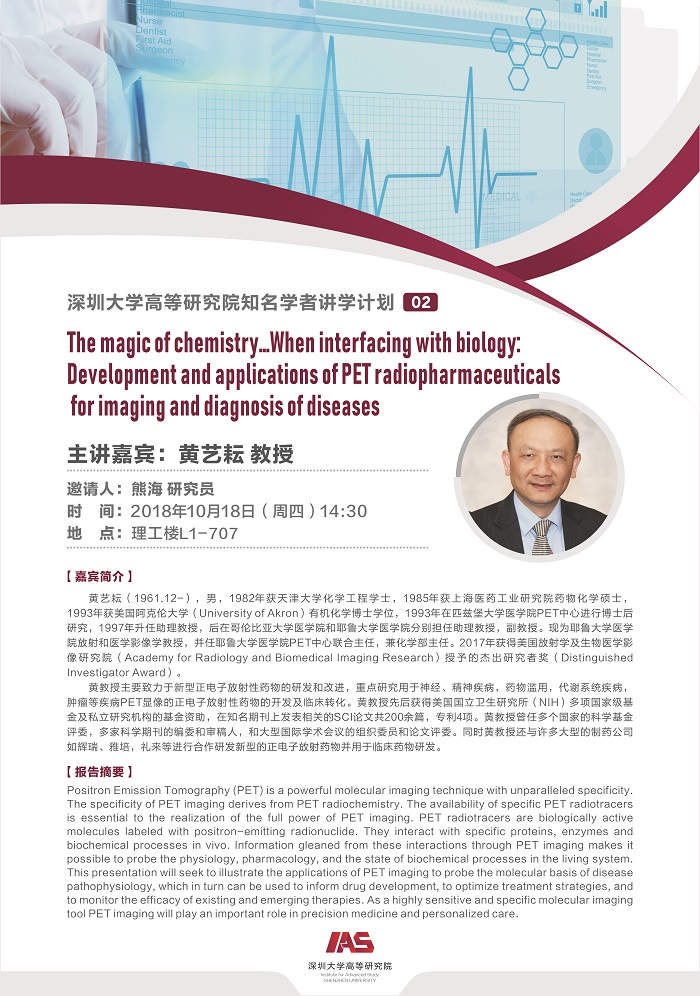Theme: The magic of chemistry…When interfacing with biology: Development and applications of PET radiopharmaceuticals for imaging and diagnosis of diseases
Speaker:Prof. Henry Huang
Host: Research Scientist Hai Xiong
Location: Room L1-707, Science and Engineering Building
Time:14:30, October 18th, 2018
About the Speaker:
Henry Huang(1961.12-), graduated from University of Akron with a Ph.D. degree in Organic Chemistry in 1985 and then he engaged in postdoctoral research at PET Center at School of Medicin of University of Pittsburgh in 1993 and was appointed as an assistant professor in 1997. Later, Prof. Huang served as an assistant professor and associate professor at Columbia University College of Physicians and Surgeons and Yale School of Medicine. He is a professor of Radiology and Medical Imaging at Yale School of Medicine and also serves as the co-director of PET Center and the director of Chemistry Department at Yale School of Medicine and also a judge of scientific funds for several countries, a member of the editorial board and a reviewer of scientific journals, as well as an organization member and a paper judge of large international academic conferences. In 2017, he was granted with the Distinguished Investigator Award by Academy for Radiology and Biomedical Imaging Research. Prof. Huang is currently studying on positron radiopharmaceuticals, foucsing on the development and clinical transformation of positron radiopharmaceuticals for PET imaging of neurological, psychiatric disorders, drug abuse, metabolic system diseases, and tumors,etc and also collaborates with many large pharmaceutical companies such as Pfizer, Abbott and Lilly. He has been funded by NIH and other private research institutions and has published over 200 SCI papers and owned 4 patents.
Talk Abstract:
Positron Emission Tomography (PET) is a powerful molecular imaging technique with unparalleled specificity. The specificity of PET imaging derives from PET radiochemistry. The availability of specific PET radiotracers is essential to the realization of the full power of PET imaging. PET radiotracers are biologically active molecules labeled with positron-emitting radionuclide. They interact with specific proteins, enzymes and biochemical processes in vivo. Information gleaned from these interactions through PET imaging makes it possible to probe the physiology, pharmacology, and the state of biochemical processes in the living system. This presentation will seek to illustrate the applications of PET imaging to probe the molecular basis of disease pathophysiology, which in turn can be used to inform drug development, to optimize treatment strategies, and to monitor the efficacy of existing and emerging therapies. As a highly sensitive and specific molecular imaging tool PET imaging will play an important role in precision medicine and personalized care.



